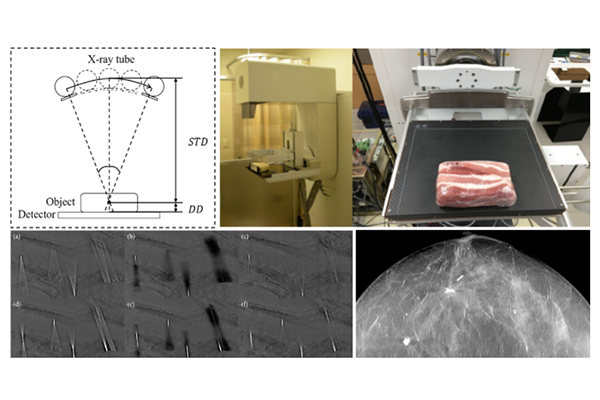In collaboration with Asan Medical Center (AMC) and the Korea Electrotechnology Research Institute (KERI), Prof. Seungryong Cho’s research team has been actively working on innovative DBT imaging techniques and systems. DBT is an emerging breast cancer screening and diagnostic tool that has advantages over digital mammography. DBT can produce quasi three-dimensional images from projections, mitigating an inherent limitation of tissue overlap in mammography. There are clinical studies showing that DBT performs comparably to or outperforms mammography in terms of specificity and recall rates. Lesion detectability in DBT images is often compromised by image artifacts, particularly when there are high-density objects in the breast such as calcifications and a needle in the case of DBT-guided biopsy. The existing image reconstruction methods typically use filtered projection data to form breast slice images, where such a filtering can cause high-density object artifacts. Prof. Cho’s team has developed a new image reconstruction method that reverses the conventional image reconstruction process chain, pushing the filtering process all the way back to the end of the chain. By doing so, they have successfully suppressed image artifacts while keeping accurate image information intact. This technique is referred to as the backprojection-filtration image reconstruction method with voting strategy. The degree of image artifact contamination was reduced dramatically, by about 80%.

The results are summarized in Fig. 1, where one can see the ripple artifacts of needles and undershoot artifacts in the conventional imaging method or in the ripple reduction method. The proposed method reconstructed the needles without such artifacts, with the background soft-tissue contrast uncompromised. Based on this successful development, the team continues to work on a novel low-dose dual-energy DBT imaging technique that can potentially improve mass detectability in dense breasts.
Seungryong Cho Dept. of Nuclear and Quantum Engineering, KAIST
Homepage: http://mirlab.kaist.ac.kr
E-mail: scho@kaist.ac.kr






